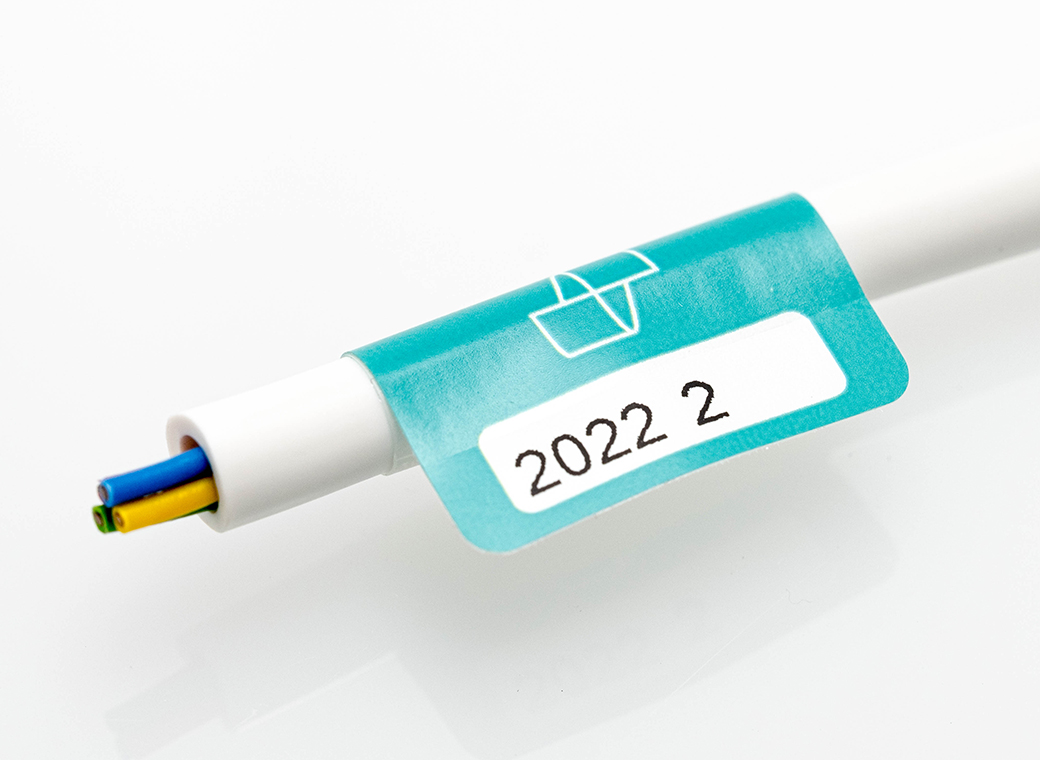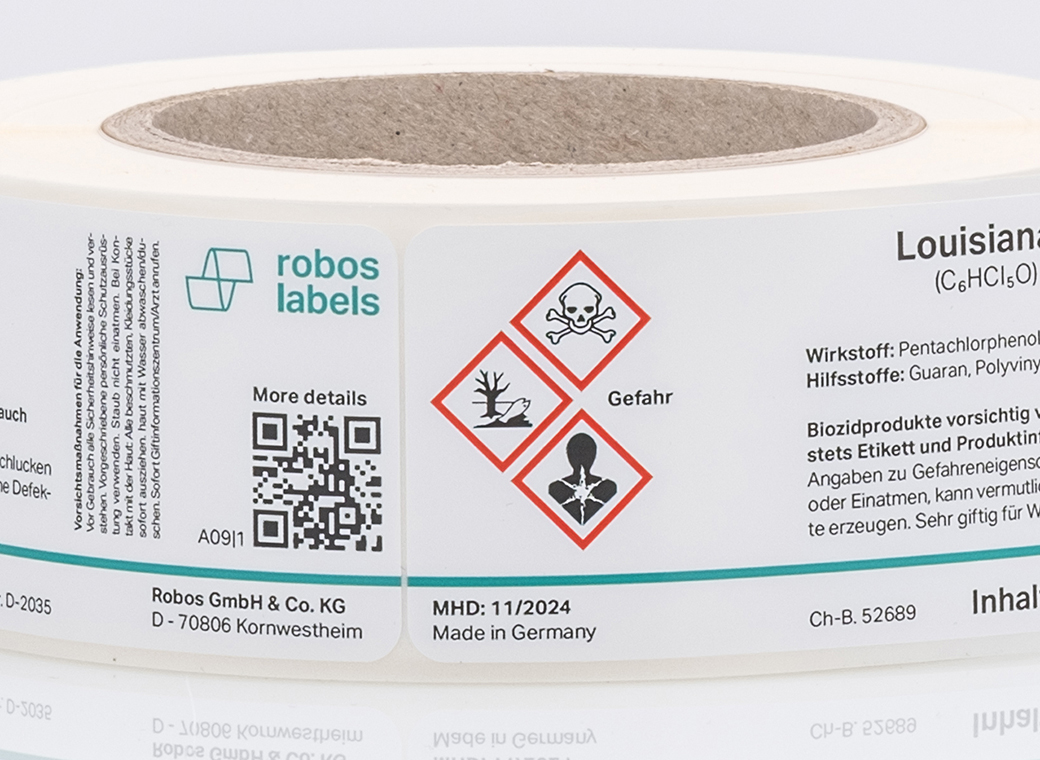When ingredients come under observation
Sometimes it happens that a proven and tested labeling solution
is suddenly under observation, because an ingredient got onto the list of
candidates of substances of concern of the European Chemical Agency (ECHA). If
a substance is banned completely, it can become effortful when the label is
used on a part which is a component of another product. Then action must be
taken quickly to run through all necessary processes for a new labeling
solution rapidly.
What does RoHS compliance mean?
RoHS means “restriction of the use of certain hazardous substances”. RoHS-compliant labeling materials must not contain different substances, which are defined in the list of ECHA (European Chemical Agency). This includes heavy metals, flame retardants and plasticizers such as lead, cadmium, mercury, hexavalent chromium, some phthalates and others. The list of harmful substances will be updated regularly. The RoHS directive 2011/65/EU protects the health of humans and animals as well as the environment.




Who is affected by the RoHS directive?
The RoHS directive affects each company which distributes electric and electronic equipment (EEE) containing cables and parts to countries which fall under the RoHS directive. Light bulbs or graphic cards also count as electrical and electronic equipment because they fulfil their own function and will be sold separately to the end users. Also distributors, integrators and resellers who deliver goods to these countries are affected if the goods contain one of the forbidden substances from the current list. It does not matter if EEE will be sold to the end customer or in B2B trade to a company. RoHS products fall within CE labeling process, this includes the obligation to issue the EU declaration of compliance, by which the compliance of the product with the RoHS 2 directive will be explicitly confirmed. In accordance with EU regulations the compliance with RoHS will be confirmed with a CE label, that way the attachment of an additional symbol is not required.
What does RoHS mean for labels and labeling?
Labels and labeling themselves are not subject to RoHS directive. But: products and goods may contain hazardous substances only within a certain tolerance in products. The label could add proportionally to the increase of the share in product, if the source materials contain one of the substances from the ECHA list. For that reason robos-labels as a label manufacturer confirms that the produced labels basically do not contain these defined harmful substances if RoHS- and REACH conformity is desired. This way the user of the labels is on the safe side.
Who is affected by the REACH regulation?
The REACH regulation applies generally and considers the comprehensive use of chemicals in all industries and companies. REACH is for “registration, evaluation, authorization and restriction of chemicals”. REACH basically applies to all chemical substances. This includes those which will be used in the industry but also substances, which occur in the everyday life like for example in paints and lacquers, furniture, clothing, but also in electric devices. The REACH regulation has an effect on the most companies in EU. For substances of concern in accordance with REACH regulation applies the obligation to pass on the information in the supply chain if they are contained in products in a concentration of more than 0.1 percent.
Interview with Christos Emmanuil, head of quality management:
How will be the standard compliance guaranteed?
If the labels will be obtained from a reliable supplier, a simple supplier declaration is sufficient, by which they confirm to comply with the limits of RoHS- or REACH regulation. A contractual assurance is also possible via an according statement in the order confirmation.
Are customers searching specifically for label producers who comply with the guidelines?
They do not search specifically, but sooner or later we have to confirm that we comply with the guidelines. Sometimes customers know little on this topic, they just want a confirmation of compliance to be on a safe side and to exclude any risks. Often also for products, which do not require any RoHS- or REACH compliance – there is a great need for security.
What guidelines does robos-labels receive from customers?
Each labeling product has two drafts for the production: a blank draft and a finished product draft with material specifications. Here there are significant features which show the supervision, control, or measurement. Often standards will be requested which are not necessary according to the draft. Here we support then with consultations.
What information do the customers require?
The customers want to know if they are affected by the standard and if our products comply with standards. The list with substances of concern will be updated and completed continuously. The tolerances get always tighter. If substances will be added or are on the candidate list, the customer needs to know it. When the used materials will be then declared harmful, then an alternative must be found.
How do you get to know about the substances that will be observed?
Our material suppliers keep us updated. If a material is affected, we search for the items where it will be applied and the buyers of these items. Our customers will be then informed. Based on the contracts it is our obligation to communicate any change. It is up to the customer if he keeps on using the labeling product as before or if alternatives shall be found.
What effort is behind the conversion of materials?
A conversion is not a simple matter. Often a new draft has to be created and we make a new sampling. Possibly, the customer manufactures only a small part from a bigger product. He then also must provide further information and samples to his end customer – for example from the automotive industry. It entails a chain of necessary new tests and approvals. A label for kegs or for a drilling machine case is made fast, but a label for a part of another product entails a complex variation process. In the automotive industry maybe tests for product requirement documents must be made with new labeling materials and it takes time again. By the conversion of materials the features and functionalities of a label may change, this can also affect for example the adhesive power.
What does robos-labels do for its customers?
We only take REACH-compliant materials in our range, guarantee the compliance and take over the complex sampling procedures. When ingredients in the material come under observation or will be forbidden, then we immediately inform our customers, look for alternatives which comply best with customer requirements and offer adequate functionality. Here we can contribute our longtime experience and see that the labeling continues seamless and meets the requirements in the best quality.
Thank you very much for the conversation!
The conversation was conducted by Christine Hartmann (corporate communications)